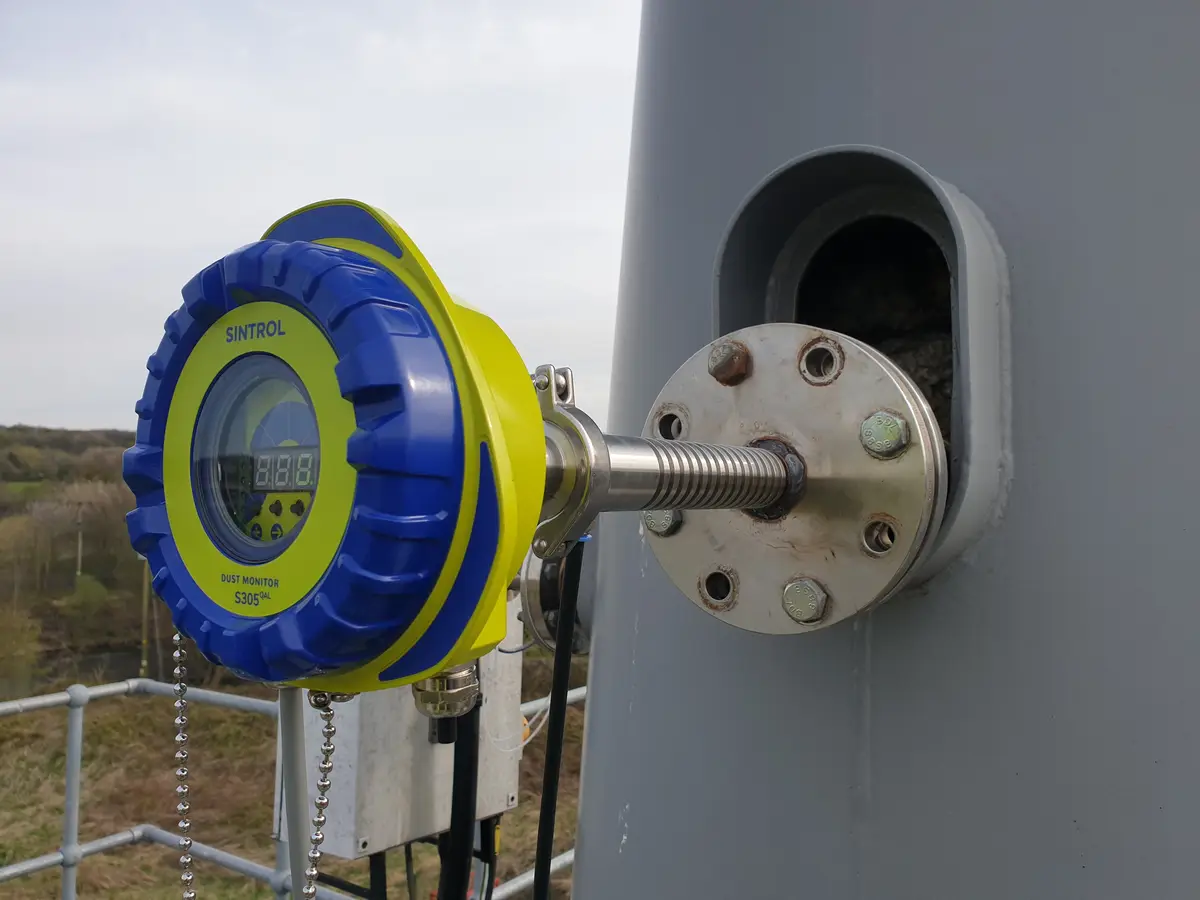Analysis Techniques
An overview of the technologies we apply in our solutions for gas and dust measurement.
Dust Measurement
Dust measurements are widely used in practice. For industrial applications, we use both the tribo-electric and the optical measurement principle.
Tribo-Electric Dust Probe
 So-called tribo probes utilize the principle that particles generate a charge when they come into contact with the probe. This results in current signals that are converted to an output proportional to the dust level. Assuming a fixed flow rate, or in combination with a flow measurement, dust concentrations can be monitored. These probes require little maintenance and are robust.
So-called tribo probes utilize the principle that particles generate a charge when they come into contact with the probe. This results in current signals that are converted to an output proportional to the dust level. Assuming a fixed flow rate, or in combination with a flow measurement, dust concentrations can be monitored. These probes require little maintenance and are robust.
Optical Dust Probes and Monitors
Optical measurement systems use the principle that dust scatters and absorbs light. A detector captures the resulting signal, from which the dust concentration can be derived, either through opacity or light scattering intensity. Optical monitors are available as highly accurate analyzers for monitoring fine dust concentrations.
Get in touch today!
Gas Analysis
Oxygen
Oxygen concentration is one of the most commonly measured parameters in gas analysis. This applies to processes, emissions, and workplace environments such as confined spaces. We select the appropriate measurement technology based on the application. Techniques used for oxygen monitoring include: Electrochemical cells (EC), Paramagnetic cells, and Zirconia cells (ZrO2).
More information about oxygen analysis principles:
https://www.ravebo.nl/producten/zuurstofanalysers/meetprincipes-zuurstofanalyse
Electrochemical Cells
Electrochemical cells are widely used, particularly for the detection of oxygen or toxic gases. These sensors function like a battery. The target gas reaches an electrolyte through a membrane, where a chemical reaction occurs, resulting in a voltage between the anode and cathode. This voltage correlates with the gas concentration.
NDIR (Non Dispersive Infrared)
 The NDIR analyzer is a photometer that operates at a specific wavelength in the infrared spectrum. By selecting the correct wavelength for the analyzer, specific gas concentrations can be selectively measured. The extinction measured by a detector is an indicator of the gas concentration. The optical path length is important in determining the concentration range of the measuring cell.
The NDIR analyzer is a photometer that operates at a specific wavelength in the infrared spectrum. By selecting the correct wavelength for the analyzer, specific gas concentrations can be selectively measured. The extinction measured by a detector is an indicator of the gas concentration. The optical path length is important in determining the concentration range of the measuring cell.
More information about NDIR analysis:
https://www.ravebo.nl/producten/ndir-analyser/ndir-meetprincipe
FTIR (Fourier Transform Infrared)
This technology allows for both quantitative and qualitative multi-gas analysis. Unlike NDIR, which focuses on a specific wavelength, FTIR uses the entire infrared spectrum. An interferometer is used to generate an interferogram of the infrared spectrum. Fourier analysis is applied to this signal to determine the concentration of various components and, to some extent, identify unknown gases.
More information about FTIR analysis:
https://www.ravebo.nl/producten/ftir-analyser/ftir-werkingsprincipe
FID (Flame Ionization Detection)
Flame ionization detectors are used to measure total hydrocarbons. This is the standard reference method for emission measurements. The gas sample is passed through a hydrogen flame, producing ions that are collected on a plate. The resulting current is a measure of the carbon atom concentration.
More information about the FID principle:
https://www.ravebo.nl/producten/fid-analyser/fid-werkingsprincipe
